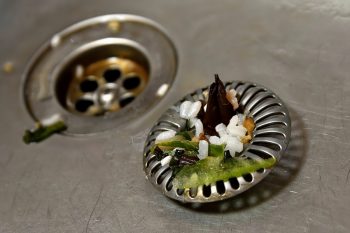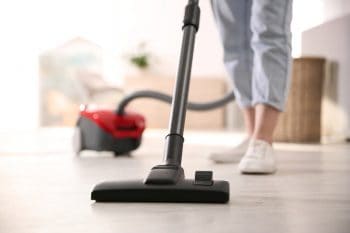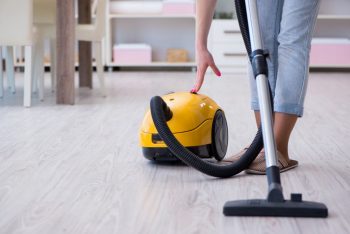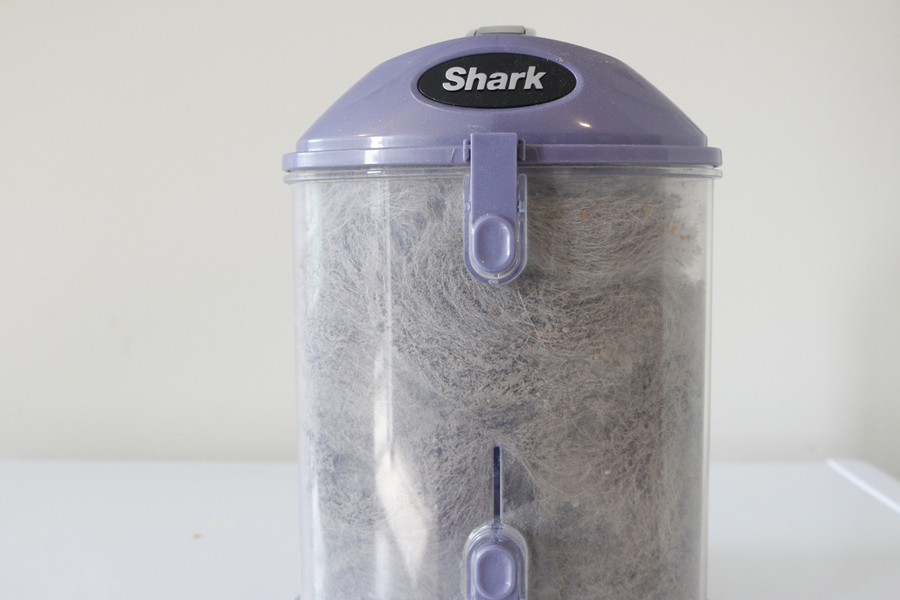
A Shark vacuum is very handy when cleaning your home. However, it produces some mild noise when operating.
However, if you notice a change in the noise made by your appliance, it could indicate a malfunction that you must inspect and fix.
The most common noises that a Shark vacuum can develop are grinding, whistling, rattling, or unusually high-pitched noises.
A noisy Shark vacuum usually does not mean your machine is completely damaged. Instead, you may be able to fix most of the noise’s root causes and restore the appliance’s efficiency.
However, it is vital to understand the reason for the noise so that you can fix the issue without hiring someone.
- The most common noises that a Shark vacuum can develop are grinding, whistling, rattling, or unusually high-pitched noises.
- The most common causes of such unusual noises in a Shark vacuum are broken fans, dirty or clogged filters, jammed/ broken brush roll, or air leaks.
- Other causes include if the vacuum has picked up something hard, a snapped powerhead belt, blockage, or an ungreased vacuum motor.
- In most cases, you can fix the issue causing your vacuum to be noisy without hiring a professional.
This article discusses the reasons for a noisy Shark vacuum. We’ll also provide insights on fixing each cause of noise in a Shark vacuum.
Causes of a Noisy Shark Vacuum
Typically, your Shark vacuum makes noise as it sanctions loose dirt and debris. Like with any appliance, a change in the noise your Shark vacuum produces indicates a possible malfunction that you must inspect.
Let’s look at some common causes of abnormal noise in a Shark vacuum.
1. Broken Fan
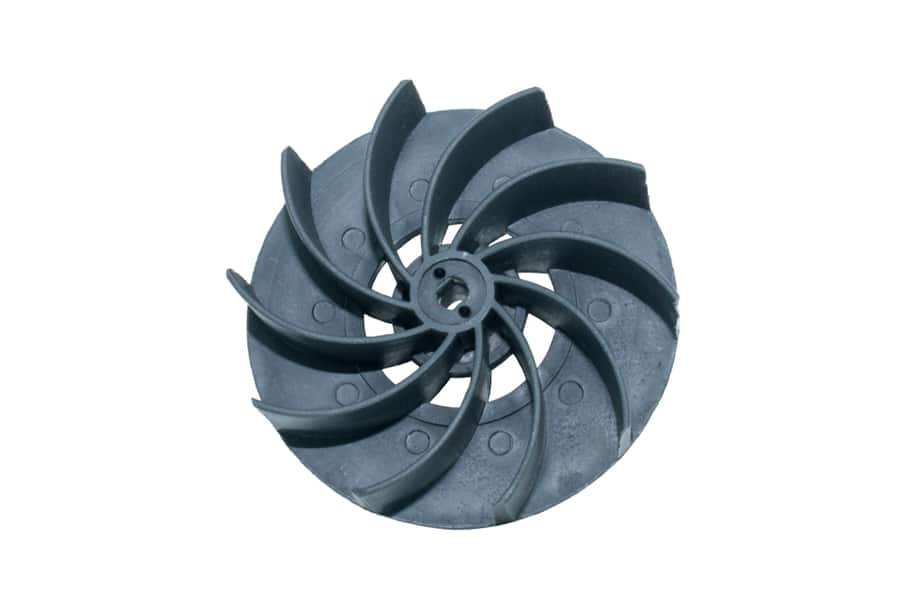
Sometimes, you’ll suck hard debris with your vacuum. However, when hard debris like pieces of rocks hit the fan blades, they can break the blades causing damage to the fan.
This will result in your appliance not functioning correctly since a fan is a significant part of a vacuum. It might also cause your appliance to produce loud noises due to overheating.
Repairing a Broken Fan
Unfortunately, you cannot repair a broken fan, so you’ll inevitably have to replace it. Replacing a vacuum motor fan requires expertise, and engaging a reliable professional is best.
2. Dirty or Clogged Filters
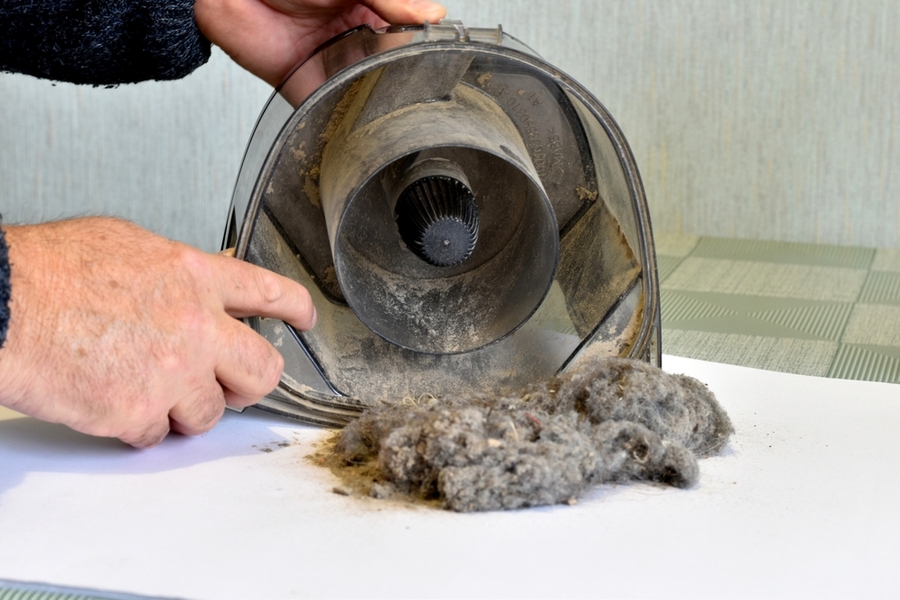
Typically, a Shark vacuum has the following filters: an incoming air filter, a pre-motor filter, and an exhaust filter. Over time, these filters become saturated with dust and dirt, making your machine noisy.
The machine cannot maintain good suction if air finds resistance as it passes through the filters.
How To Fix Dirty/Clogged Filters
Cleaning or replacing dirty filters can help make your Shark vacuum less noisy because air will flow smoothly into the airway, ensuring good suction.
Here’s how to fix dirty/clogged filters:
- Read your machine’s user manual to establish how many filters are on your Shark vacuum.
- Please take out the filters and clean them.
- For washable filters, clean them in a sink using warm water. You can add a few drops of essential oil, such as eucalyptus and peppermint, to the filter so that the room smells nice the next time you’re vacuuming.
- Leave the filters to dry before putting them back into the vacuum machine.
- For the non-washable filters, remove the dust and dirt build-up by shaking them.
- Use a damp micro-fiber cloth to wipe the filters and allow them to dry completely.
- If any filter is torn, replace it with a new one.
3. Jammed/Broken Brush Roll

The brush roll on your vacuum can become so dirty that it will not be effective.
Also, it can get jammed if hair, threads, or strings attach themselves to the brush. This results in the vacuum producing high-pitched noises when in use.
How To Fix Jammed Brush
Consider the following steps to repair a jammed brush roll:
- First, turn the appliance off and unplug it from the power source.
- Next, lay the vacuum on its side to access the brush roll.
- Next, remove any knobs holding the brush roll and remove the brushes.
- Next, use a microfiber cloth to clean the brushes and untangle any hair or strings from the brushes.
- Finally, return the brush roll to its position and restore the knobs.
- Test the appliance to establish whether the noise has dissipated. If it has not, the brush roll is damaged and may need to be repaired or replaced.
4. Air Leak
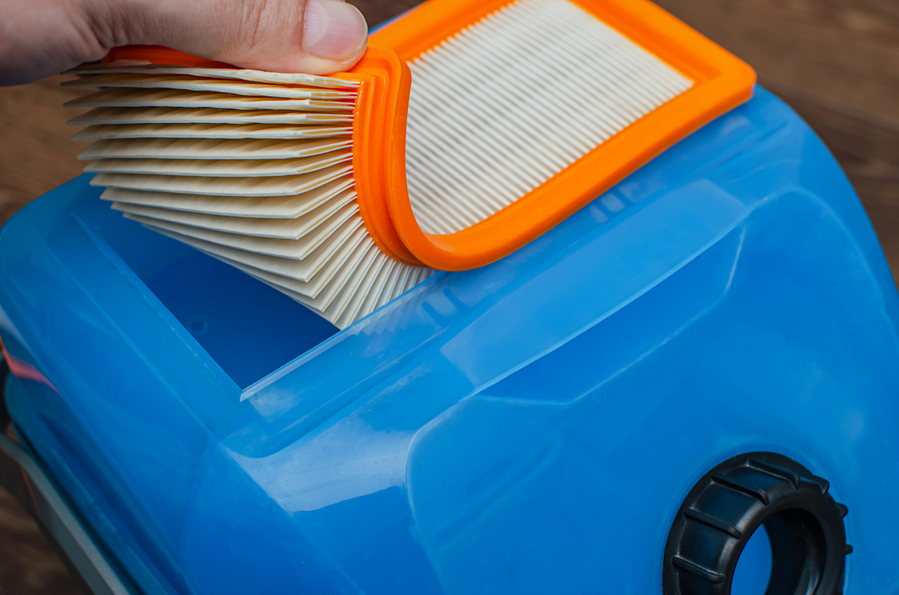
Ideally, a Shark vacuum should only bring in air through the hose. However, air can still penetrate the vacuum through the vacuum cover if it is not correctly sealed or the hose has holes.
As the air squeezes to enter through the unassigned parts of the vacuum, it produces a whistling sound.
How To Fix Air Leaks in Your Vacuum
Use the following steps to stop the whistling sound in your Shark vacuum:
- First, turn the vacuum on to identify the source of the air leak.
- If the noise is from the vacuum’s cover, check what is causing it not to seal properly. For example, if there is dirt on the cover, wipe it; if the vacuum bag is not placed perfectly, consider fixing it.
- If you identify a hole in the wand or hose, use tape to cover it as you prepare to replace the parts.
5. A Snapped Powerhead Belt
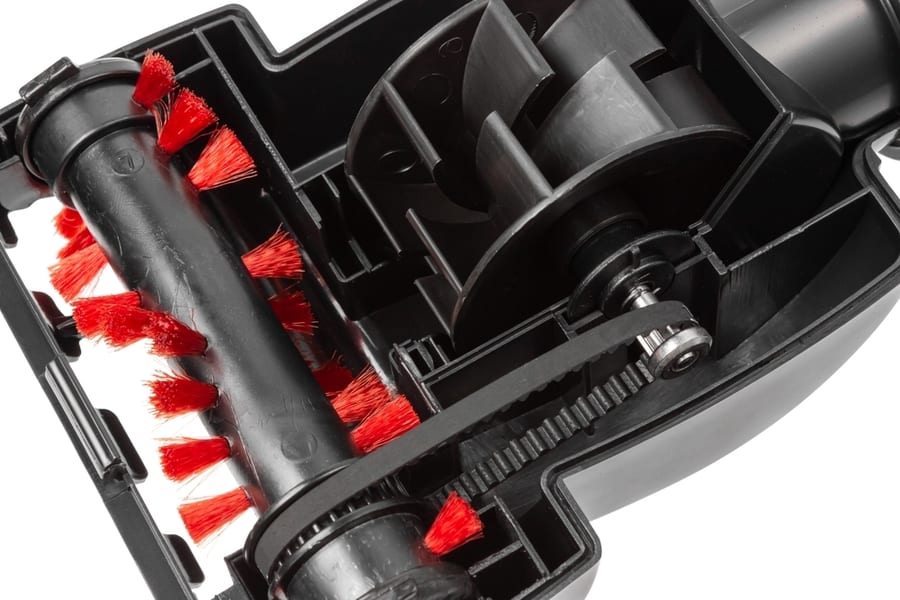
Sometimes, you might clean your brush roll, but the vacuum is still noisy. In such a case, you might need to inspect the powerhead belt if your Shark vacuum model has a powerhead.
The powerhead belt turns the brush roll but eventually snaps as it experiences wear and tear.
However, the motor continues to turn even when the belt is damaged. This produces a rattling sound, and eventually, the brush bar stops spinning.
How To Fix a Snapped Powerhead Belt
Here are steps you should consider to fix a snapped powerhead belt:
- First, detach the powerhead from the rest of the vacuum and place it on the floor or any other suitable work surface.
- Access the inner parts of the powerhead by removing the soleplate.
- Keenly remove the belt and any broken pieces.
- Insert the new belt around the motor and the brush bar.
- Spin the brush bar manually to test whether the belt is perfectly aligned.
- Put back the soleplate and tighten any screws you may have removed.
6. The Vacuum Has Picked Up Something Hard

It is not unlikely that your Shark vacuum can pick up hard debris, such as rock pebbles or paper clips, as you clean the home.
When these items enter the vacuum’s bin, they’ll constantly hit its sides, producing a rattling noise. The items may also get stuck on parts of the vacuum and cause a rattling noise when they dislodge.
How To Fix Rattling Caused by Hard Items
The solution to a Shark vacuum rattling resulting from the appliance picking hard objects is to remove the item.
Consider the following:
- Empty the bin.
- Inspect the hose and band for stuck items and remove them where possible.
7. Blockage in the Vacuum

This often occurs when the vacuum wand/hose is clogged or damaged. Also, it can happen if the vacuum has sucked something significant. This means the vacuum’s suction motor is still operational, trying to suck in air, but nothing goes through.
The vacuum will produce a high-pitched noise or become louder than usual. Also, the brush roll indicator will usually turn red in case of blockages in the vacuum.
How To Clear Vacuum Blockage
If the noise from your Shark vacuum is resulting from a blockage in the airway, it should disappear if you follow the steps below:
- First, turn off the power source and unplug the vacuum.
- Next, disconnect the vacuum’s attachments, including the handle, hose, and wand.
- Finally, check the openings for clogs and remove them, if any.
- Using a torch, inspect whether any of the airways are clogged. Finally, remove or clean the item/ dirt causing the blockage.
- Since it can be challenging to see through a hose, consider dropping a coin into it. Then, the hose has no blockage if the coin comes through the other end.
- If the hose is clogged, the best thing is to replace it.
- After that, reassemble the machine and plug it in.
- The vacuum should work without noise, and the brush roll indicator will turn green. If not, the issue was not caused by a blockage.
8. Ungreased Vacuum Motor

The Shark vacuum’s motor becomes dry after a long period of being used. This results in it producing a grinding noise.
How To Grease a Shark Vacuum’s Motor
To fix the grinding sound produced by an ungreased vacuum motor, you must lubricate it.
Here’s how:
- Turn off and unplug the vacuum from the power source.
- Remove the powerhead from the vacuum.
- Remove the soleplate and locate the mortar.
- Apply oil to the mortar being keen not to overlubricate it.
- Put the soleplate back and reattach the powerhead.
- Test whether the noise has disappeared.
Conclusion
As you can see, your Shark vacuum might be noisy for many reasons. Luckily, you can fix most of the issues that cause noise in a Shark vacuum. However, it is best to contact a professional if you are unsure about something.
Frequently Asked Questions
Why Is My Shark Vacuum Rattling?
If you’ve noticed rattling sounds from your Shark vacuum, it could indicate that the vacuum has sucked in a hard item, such as a piece of rock that is constantly hitting against the walls of the dirt bin.
Also, it could mean that your powerhead belt has snapped due to the effects of wear and tear. The vacuum will produce a rattling sound because the motor turns even when the belt is damaged.
What Can Cause a Shark Vacuum To Produce Whistling Sounds?
A Shark vacuum can produce whistling sounds if there is air leakage in the vacuum cover if it’s not properly sealed, through other parts of the vacuum that is not correctly sealed, or if the hose has holes.
As the air squeezes to enter through the unassigned parts of the vacuum, it produces a whistling sound.
Ideally, a Shark vacuum should only bring in air through the hose.
What Can Cause a Shark Vacuum To Produce a High-Pitched Noise?
If a Shark vacuum’s brush roll is jammed or broken, the filters are clogged, or there is any blockage, the vacuum will produce a high-pitched noise as it tries to function normally but encounters resistance.


